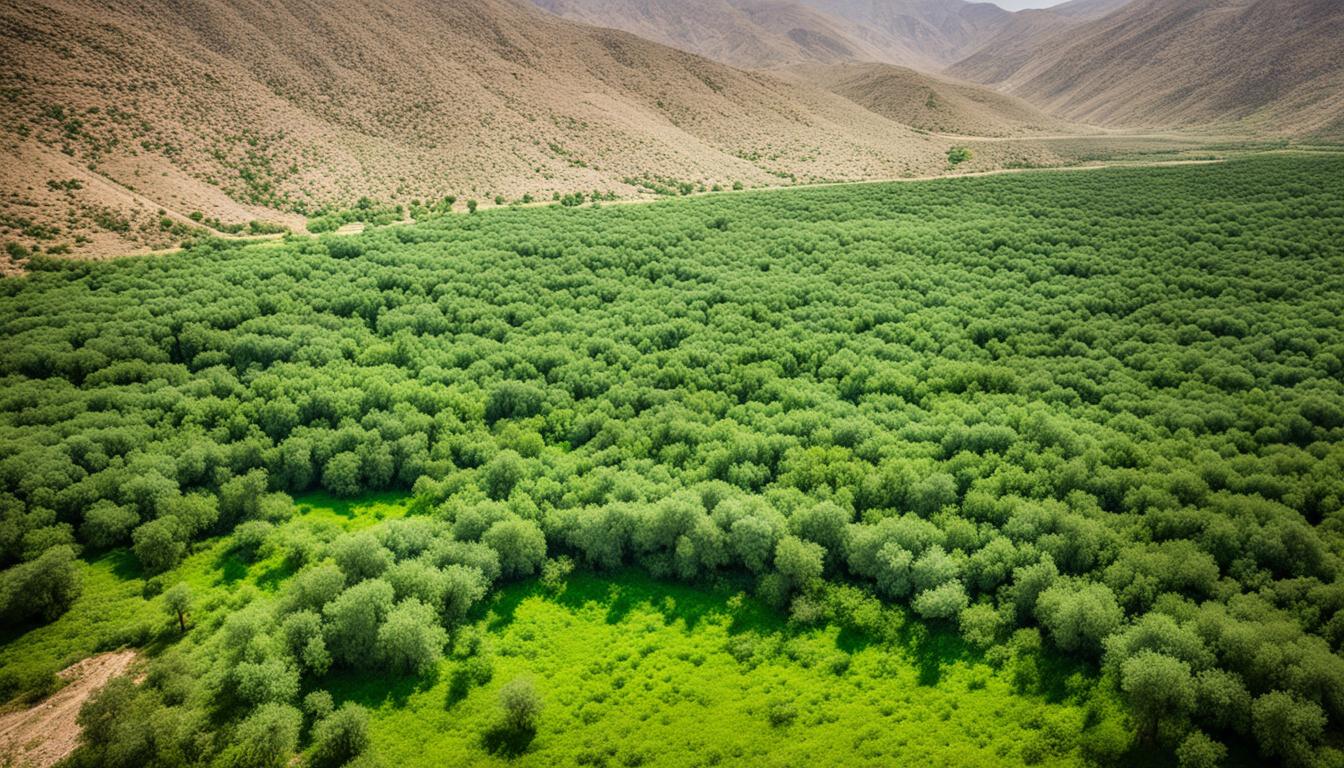India Biodiversity: Animal and Plant Species and What Is Under Threat
In the past 50 years, human population growth, development, and urbanisation have led to the deforestation of millions of acres of forests globally. This has resulted in the loss of habitats and food sources for wildlife, leading to the acceleration of the sixth mass extinction of wildlife on Earth. India, being one of the most densely populated countries, is facing rapid human activity and land development, which poses a threat to its biodiversity. There are several endangered species in India that urgently need protection, including Bengal tigers, Asiatic lions, snow leopards, Indian rhinoceros, blackbucks, lion-tailed macaques, resplendent tree frogs, Kashmiri red stags, Nilgiri tahrs, and Indian bison.
Key Takeaways:
- India’s biodiversity is under threat due to human activity and land development.
- Endangered species in India include Bengal tigers, Asiatic lions, snow leopards, Indian rhinoceros, blackbucks, lion-tailed macaques, resplendent tree frogs, Kashmiri red stags, Nilgiri tahrs, and Indian bison.
- Conservation efforts are crucial for safeguarding India’s unique flora and fauna.
- Wildlife sanctuaries in India play a vital role in preserving India’s biodiversity.
- Recognising and protecting biodiversity hotspots in India is essential for conservation efforts.
Bengal Tigers: Facing Threats from Poaching and Habitat Loss
Bengal tigers play a vital role in the ecosystem as top predators, balancing the delicate web of life in India’s forests. However, these magnificent creatures are facing numerous challenges that threaten their very existence.

Bengal tigers, belonging to the Panthera tigris species, represent around 50% of the global tiger population, with India serving as their major stronghold, hosting approximately 70% of these endangered big cats. Despite their adaptability, Bengal tigers have experienced a significant decline in numbers due to ruthless poaching, habitat destruction, and the encroachment of urbanisation.
Poaching has emerged as a grave threat to the Bengal tiger population. These powerful creatures have been hunted relentlessly for their beautiful striped skin and various body parts, which are highly valued in illegal wildlife trade markets. The demand for tiger products, driven by unfounded beliefs in their medicinal and aphrodisiac properties, continue to fuel this heinous crime.
Conservation Fact:
In just over a decade, an estimated 1,753 Bengal tigers were killed.
The loss of their natural habitat is another significant peril Bengal tigers face. As urban areas expand and human settlements encroach upon forests, these magnificent creatures are forced into ever-smaller territories, leading to increased competition for resources and a higher likelihood of conflicts with humans.
The encroachment of urban development has reduced the Bengal tiger’s historical range to a mere 7%. The fragmentation and destruction of their natural habitats have left them with limited areas to roam and find suitable prey, undermining their chances of survival.
Taking into account these combined threats, it is alarming to note that the Bengal tiger population now stands at 2,500 individuals in the wild. The total number of all tiger breeds in the wild is 5574, in 2024.
The Impact of Human-Wildlife Conflict
Human-wildlife conflict is also a pressing concern for the survival of Bengal tigers. As humans encroach upon the tiger’s territory, interactions between the two species become more frequent, often leading to dangerous situations for both parties involved.
Instances of tigers attacking livestock or humans result in retaliatory killings, as communities resort to protecting their livelihoods and safety. These conflicts not only jeopardise the lives of individual tigers but also create a negative perception of these majestic creatures, hindering conservation efforts and exacerbating the tigers’ plight.
Efforts are being made to mitigate human-wildlife conflicts by implementing measures such as community-based conservation initiatives, improving livestock enclosures, and creating awareness programmes to promote coexistence between humans and tigers.
Protecting the Bengal tiger requires immediate and concerted action. Enhanced anti-poaching efforts, strict enforcement of wildlife protection laws, and the expansion of protected areas and corridors can help safeguard these magnificent creatures from the brink of extinction. It is vital that we strive to preserve their natural habitats and secure a future where Bengal tigers once again thrive in the wild.
Asiatic Lions: Struggling to Survive in a Restricted Habitat
The Asiatic lion, historically native to south-west Asia and eastern India, is a smaller cousin to its African counterparts. However, the entire population of this majestic species is now confined to the Gir National Park in Gujarat, India. With only about 500-650 individuals left, the Asiatic lion is listed as an endangered species, facing multiple challenges.
Habitat loss is a significant threat to the survival of the Asiatic lion. The expansion of agriculture and urban development has led to the shrinking of their natural habitat, limiting their roaming area. Agricultural practices have further restricted their habitat, leaving them vulnerable to human-wildlife conflict and increased contact with humans.
Human-wildlife conflict poses a great danger to the Asiatic lion population. Illegal electrical fences erected by farmers to protect their crops unintentionally harm and kill these majestic creatures. Additionally, accidental drownings in farmer-dug wells have been reported, further reducing the already restricted number of lions.
| Threats to Asiatic Lions | Impact |
|---|---|
| Illegal electrical fences | Causing harm and accidental death |
| Accidental drownings in farmer-dug wells | Reducing the already restricted population |
| Habitat loss due to agricultural practices | Limiting the roaming area and increasing human-wildlife conflict |
Conservation efforts are underway to protect and conserve the Asiatic lion population. Strict regulations and monitoring of agricultural practices are being implemented to minimise the impact on their habitat. Awareness programmes are also being conducted to educate local communities about the importance of coexistence with wildlife.
The Asiatic lion’s preservation is not just crucial for the species itself, but also for the overall biodiversity of the region. Efforts must continue to secure a future where these magnificent creatures can thrive in their natural habitat.
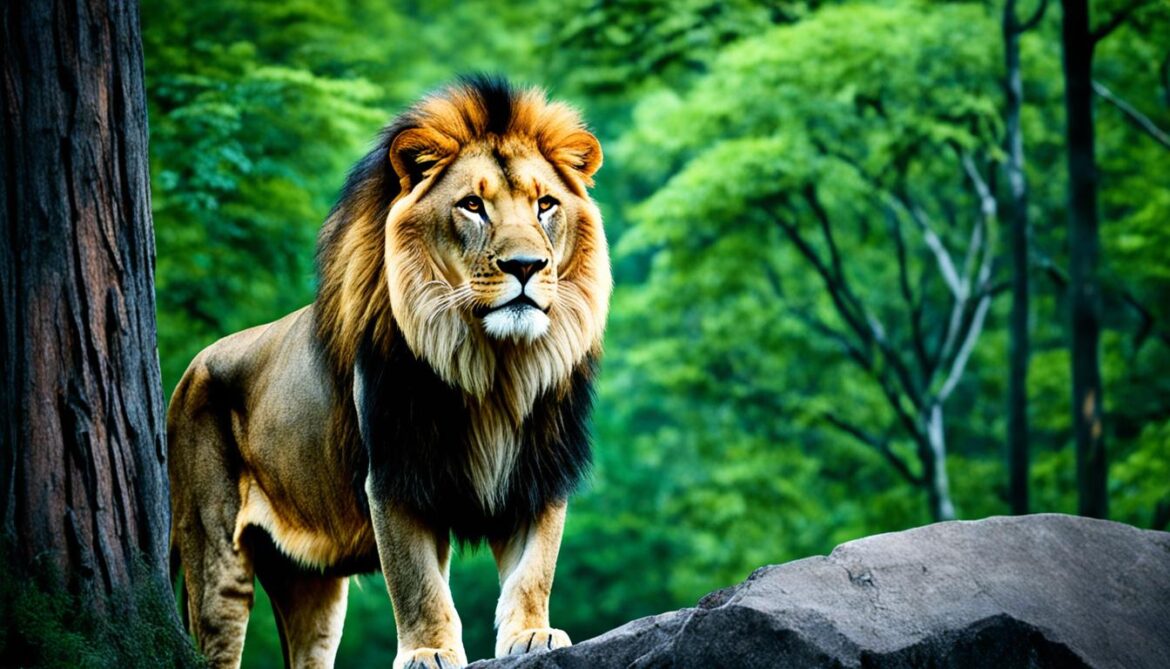
Snow Leopards: Surviving in a Fragmented Habitat
Snow leopards, a majestic and elusive endangered species, were once found across the mountain ranges of Asia. However, they are now limited to specific regions in India, including Ladakh, Himachal Pradesh, Uttarakhand, and the Himalayas. With a population of only about 500 individuals in India, snow leopards face numerous threats that endanger their survival.
Habitat loss is one of the most significant challenges for snow leopards. Hydroelectric and mining projects, along with rapid urbanization, have fragmented their natural habitats. As a result, these solitary creatures struggle to find suitable living spaces and sufficient prey.
Poaching is another grave danger snow leopards face. The illegal wildlife trade targets these magnificent cats for their fur and body parts, as they are highly valued in traditional medicine and the fashion industry. The demand for their pelts, bones, and organs exacerbates the decline in their population.
Declining prey numbers further compound the snow leopards’ plight. As their natural prey, such as the argali sheep and blue sheep, face their own threats from habitat loss and hunting, snow leopards suffer from a scarcity of food sources. This is especially concerning as snow leopards require large territories to sustain themselves.
Snow leopards also experience conflicts with remote communities, leading to a delicate human-animal relationship. These conflicts arise when snow leopards prey on livestock, adversely impacting the livelihoods of communities living near their habitats.
Conservation Efforts for Snow Leopards
Efforts are being made to protect and conserve snow leopards in India. Organisations such as the Snow Leopard Trust work closely with local communities to develop sustainable conservation practices. These initiatives involve providing alternate livelihood options, implementing predator-proof livestock enclosures, and promoting ecotourism.
The Indian government has also taken steps to safeguard snow leopards through the establishment of protected areas and the enforcement of laws against poaching and illegal trade. The Hemis National Park in Ladakh, for example, is a key habitat for snow leopards and is actively managed for their protection.
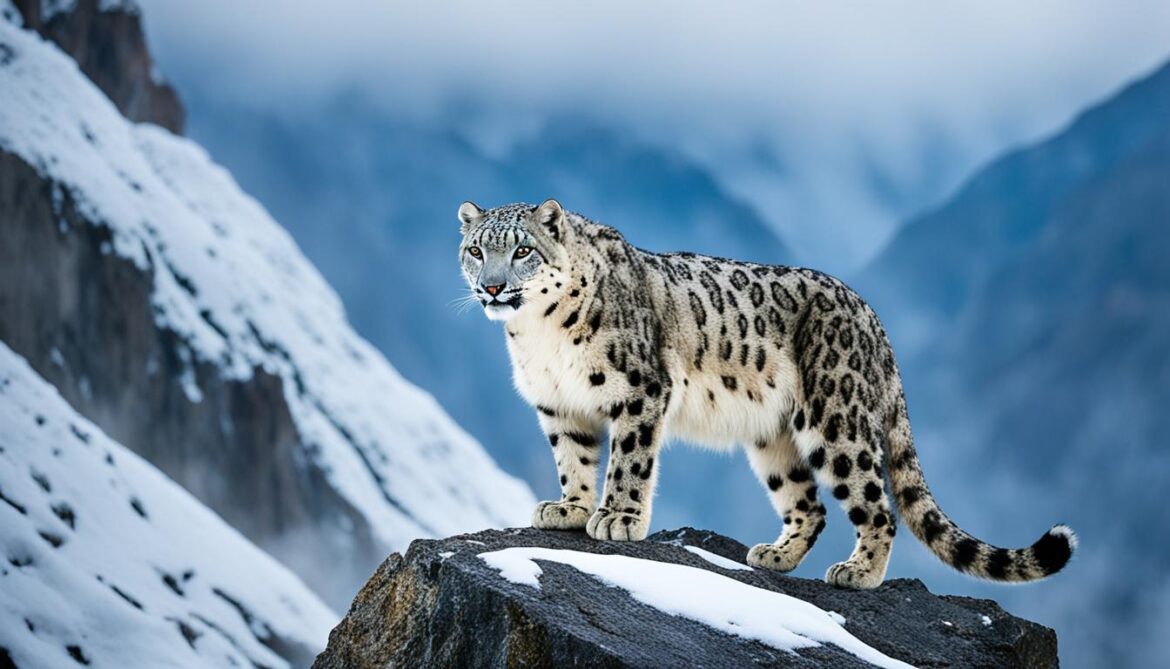
In conclusion, snow leopards face an uphill battle for survival in the face of habitat loss, poaching, declining prey numbers, and human-animal conflict. However, concerted conservation efforts and community involvement hold promise for securing a brighter future for these magnificent creatures.
Indian Rhinoceros: A Conservation Success Story
The Indian rhinoceros, also known as the one-horned rhinoceros, is an endangered species that has overcome significant challenges through successful conservation efforts.
In the early 20th century, Indian Rhinoceros populations were in critical condition, with as few as 200 individuals remaining. They were heavily targeted for their horns, believed to have medicinal properties, and killed as agricultural pests.
However, thanks to strict conservation measures, the Indian rhinoceros population has increased to around 3,700 today. This remarkable recovery is primarily seen in the northeastern regions of India and the Terai grasslands of Nepal.
The conservation success of the Indian rhinoceros can be attributed to various factors:
- Anti-poaching efforts: Stringent anti-poaching measures and increased surveillance have significantly reduced poaching incidents, thereby protecting the rhinoceros from illegal hunting.
- Habitat conservation: The establishment of protected areas and national parks has ensured the preservation of critical habitats for the Indian rhinoceros. These regions provide safe havens and promote the growth and sustainability of the population.
- Community involvement: Involving local communities in conservation initiatives has played a vital role in the protection of the Indian rhinoceros. Educating communities about the importance of conservation and providing alternative livelihood options has helped minimize human-wildlife conflict.
- International cooperation: Collaborative efforts between India, Nepal, and international conservation organisations have provided additional support and resources for the conservation of the Indian rhinoceros.
The conservation success of the Indian rhinoceros serves as a shining example of how dedicated efforts can revive the populations of endangered species. It highlights the importance of proactive conservation measures in safeguarding the biodiversity of our planet.
“The recovery of the Indian rhinoceros population showcases the potential for successful conservation when various stakeholders come together with a shared vision.” – John E. Scanlon
| Conservation Measures | Outcome |
|---|---|
| Anti-poaching efforts | Significant reduction in poaching incidents |
| Habitat conservation | Preservation of critical habitats |
| Community involvement | Minimised human-wildlife conflict |
| International cooperation | Additional support and resources |

Blackbucks: Endangered Antelopes of India
Blackbucks, or Indian antelopes, were once abundant in India but have become one of the most endangered species. Their population has significantly declined due to severe poaching, habitat loss, predation by stray dogs, pesticide use, and vehicle accidents. These human-threats have placed them at great risk and have pushed them towards the brink of extinction.
Conservation efforts have been crucial in combating the decline of blackbucks. Through dedicated conservation initiatives, their population has shown signs of recovery, with around 25,000 individuals estimated to remain. These efforts include the establishment of protected areas, restoration of their natural habitats, anti-poaching measures, and public awareness campaigns.
However, despite these conservation efforts, blackbucks continue to face ongoing threats to their survival. The loss and fragmentation of their habitats due to urbanisation, agricultural expansion, and industrial development pose significant challenges. Additionally, illegal poaching for their valuable horns and hides remains a severe concern.
It is essential to continue and strengthen conservation efforts to safeguard the blackbucks’ future. Collaborative initiatives involving local communities, government agencies, and conservation organisations are vital in ensuring the long-term protection and preservation of this iconic Indian antelope species.
Lion-Tailed Macaques: Endemic Primates Under Threat
The lion-tailed macaque is a rare primate species found only in the Western Ghats of South India. With a population of around 4,000 individuals, these fascinating primates are facing numerous challenges that threaten their survival.
Habitat loss is one of the primary concerns for lion-tailed macaques. Deforestation and urbanisation have resulted in the destruction of their natural habitats, leaving them with limited space to thrive. As their home continues to diminish, the macaques are forced into smaller territories, leading to increased competition for resources and potential conflicts with humans.
Hunting poses another significant threat to lion-tailed macaques. Despite being protected by law, illegal hunting and poaching activities still occur. These primates are hunted for their meat, body parts, and even for the pet trade. Such practices further contribute to the decline in their population.
“The lion-tailed macaque is a critically endangered species, with only a few thousand individuals left in the wild.”
In addition to habitat loss and hunting, lion-tailed macaques face another challenge that affects their behaviour and survival. Easy access to human food and garbage has altered their natural foraging patterns, leading to changes in their feeding behavior and social dynamics. The macaques that have become habituated to human presence may also face increased risks of roadkills and encounters with vehicles.
Conservation efforts are crucial for the long-term survival of lion-tailed macaques. Protecting their habitats, implementing stricter anti-poaching measures, and promoting coexistence between humans and these enchanting primates are essential steps towards securing their future. Education and awareness programs can also play a crucial role in fostering a sense of responsibility and appreciation for the conservation of this endangered primate species.
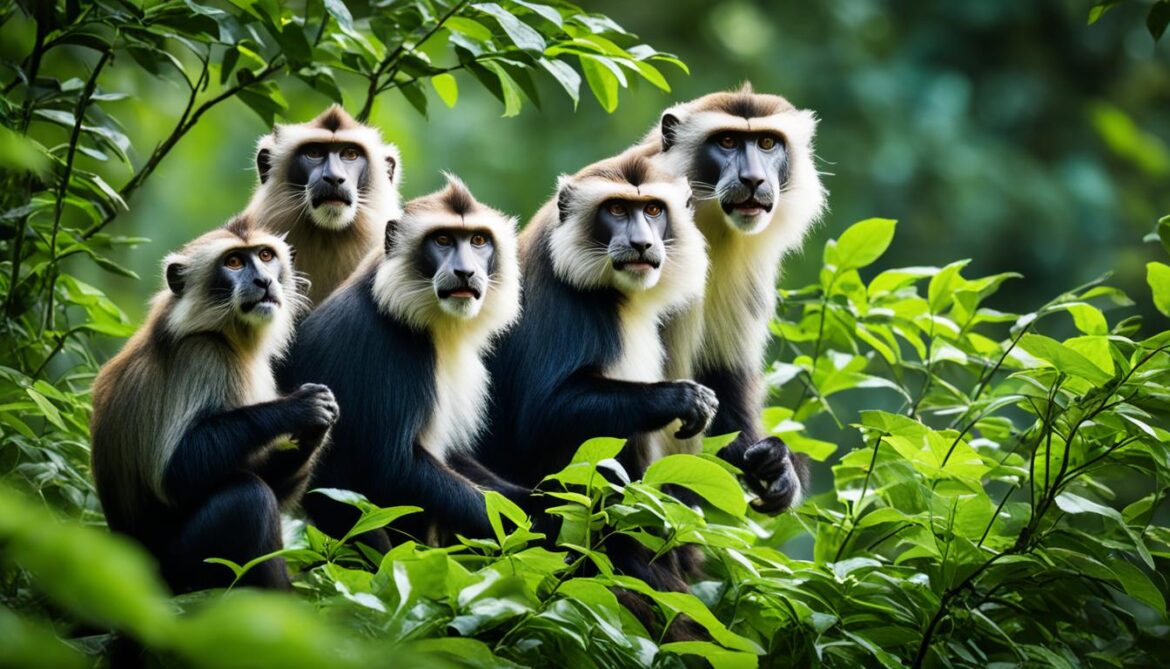
Threats to Lion-Tailed Macaques:
- Habitat loss due to deforestation and urbanization
- Illegal hunting and poaching
- Altered behavior from easy access to human food
Resplendent Tree Frog: A Rare Discovery in the Western Ghats
The Western Ghats in India are home to a remarkable array of flora and fauna, including the Resplendent Tree Frog. This stunning amphibian, first discovered in 2010, is an endangered species that can only be found in the Anamudi summit of Kerala, within the breathtaking Eravikulam National Park.
The Resplendent Tree Frog is a small and vibrant creature, adorned with striking green and yellow hues. Its colorful appearance makes it a symbol of beauty in the Western Ghats.
However, the future of this fascinating creature hangs in the balance. With an estimated population of only about 300 individuals, the Resplendent Tree Frog is considered critically endangered. The main reason for its decline is habitat loss, a common threat faced by many endangered species around the world.
The Western Ghats, once covered in dense forests, have suffered from deforestation and urban development. These activities have resulted in the destruction of the Resplendent Tree Frog’s natural habitat, leaving it with limited areas to thrive.
Conserving the habitat of the Resplendent Tree Frog is of paramount importance. Protecting the Western Ghats and the Eravikulam National Park from further encroachment and deforestation is crucial to ensure the survival of this unique species.

The Key Points about the Resplendent Tree Frog:
- Endangered Species: The Resplendent Tree Frog is considered critically endangered with only an estimated population of about 300 individuals.
- Habitat Loss: Deforestation and urban development have greatly reduced the natural habitat of the Resplendent Tree Frog in the Western Ghats.
- Conservation Priority: Protecting the remaining habitat in the Anamudi summit of Kerala is crucial for the survival of the Resplendent Tree Frog and its unique beauty.
The Resplendent Tree Frog serves as a reminder of the importance of preserving our natural world and the incredible biodiversity it holds. Efforts must be made to prioritize its conservation and protect the Western Ghats for future generations to appreciate and enjoy.
Kashmiri Red Stag: A Critically Endangered Deer Species
The Kashmiri Red Stag, also known as the hangul, has been listed as critically endangered for decades. The population of this magnificent species has suffered a dramatic decline primarily due to habitat fragmentation, land encroachment, and a very low fawn-female ratio. Currently, the hangul is largely restricted to Dachigam National Park, one of the few remaining sanctuaries for its survival.
The Kashmiri Red Stag is an iconic and nationally treasured species that holds great significance for the region’s biodiversity. Recognizing the urgent need for conservation, efforts are actively underway to protect and restore its dwindling population.
Habitat preservation and restoration projects are crucial in addressing the habitat loss and fragmentation experienced by the hangul. These initiatives aim to create larger, interconnected forest areas that can support a sustained population of Kashmiri Red Stags.
Conservation organizations, researchers, and government agencies are working collaboratively to reduce land encroachment in critical hangul habitats. They are focusing on raising awareness and implementing strict regulations to mitigate further decline and promote a harmonious coexistence between humans and wildlife.
Understanding the hangul’s reproductive challenges, conservationists are conducting scientific studies to improve the fawn-female ratio through breeding programs and monitoring efforts. These initiatives are essential to ensure the long-term survival of the species.
| Conservation Efforts for the Kashmiri Red Stag | Impact |
|---|---|
| 1. Habitat preservation and restoration | Restoring vital ecosystems for the hangul’s survival |
| 2. Raising awareness and implementing regulations | Reducing land encroachment and promoting coexistence |
| 3. Breeding programs and monitoring efforts | Improving the fawn-female ratio and ensuring species’ long-term survival |
The conservation of the Kashmiri Red Stag is a race against time to protect this beautiful species from facing extinction. The efforts invested in its recovery have the potential to save not only a single species but also the unique biodiversity and ecological balance of the region.
Key Takeaways:
- The Kashmiri Red Stag, also known as the hangul, is critically endangered.
- Habitat fragmentation, land encroachment, and a low fawn-female ratio have contributed to its population decline.
- Conservation efforts focus on habitat preservation, raising awareness, and breeding programs.
- The survival of the Kashmiri Red Stag is vital for maintaining biodiversity and ecological balance in the region.
Nilgiri Tahr: Mountain Goats at Risk
The Nilgiri tahr is a critically endangered mountain goat species found in the Western Ghats of India. With a population of only about 2,500-3,000 individuals remaining in the wild, the Nilgiri tahr faces several threats to its survival.
Habitat loss is one of the major challenges for the Nilgiri tahr. The Western Ghats, known for their biodiversity, have been extensively modified by human activities such as agriculture, deforestation, and infrastructure development. As a result, the tahr’s range has been restricted to small pockets in Kerala and Tamil Nadu.
Poaching is another significant concern for the Nilgiri tahr. Despite being protected by law, illegal hunting for their meat, horns, and hides continues to pose a threat to their population. The high demand for these illegal products fuels the poaching activities.
However, climate change is emerging as a critical threat to the Nilgiri tahr’s survival. Rising temperatures and changing rainfall patterns in the Western Ghats are causing habitat degradation and altering vegetation dynamics. These changes directly impact the availability of food and suitable habitats for the tahr, further endangering their population.
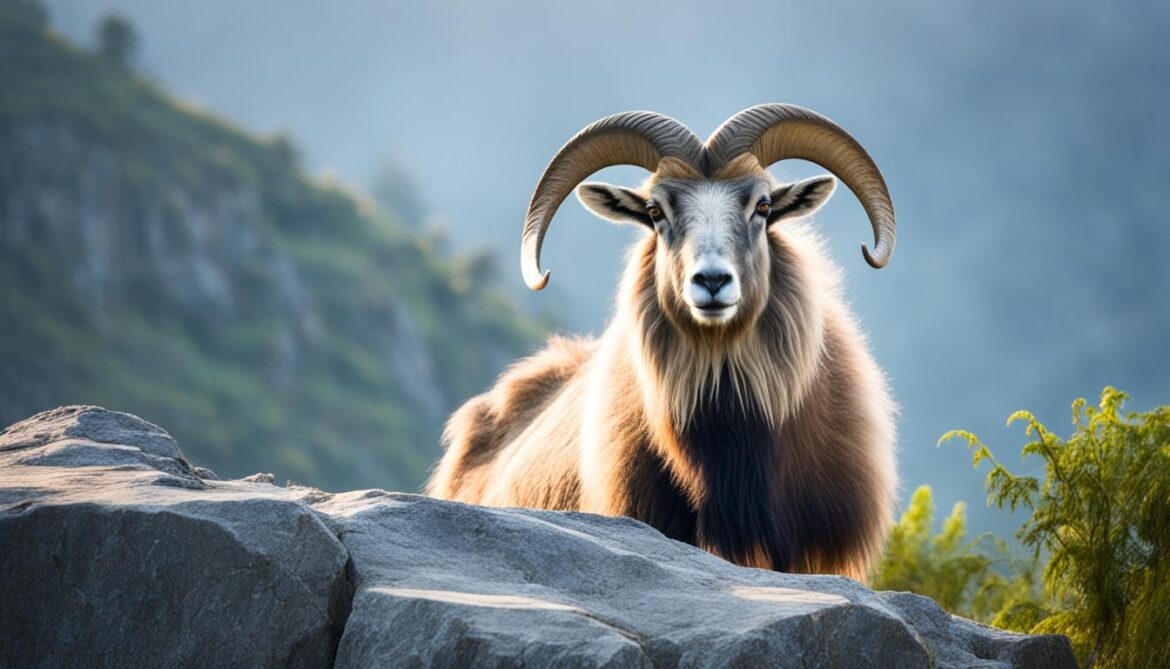
Efforts are being made to conserve the Nilgiri tahr and mitigate the threats it faces. Conservation organizations and wildlife authorities are focused on protecting and restoring the tahr’s habitat, implementing anti-poaching measures, and raising awareness about the importance of this species. Additionally, research is being conducted to better understand the impacts of climate change on the tahr and develop strategies to adapt to these changes.
The conservation of the Nilgiri tahr is essential not only for the survival of this unique mountain goat species but also for the preservation of the delicate ecosystems of the Western Ghats. By addressing habitat loss, poaching, and the challenges posed by climate change, we can work towards securing a better future for the Nilgiri tahr and the biodiversity of the region.
Indian Bison: Threatened by Poaching and Habitat Destruction
The Indian bison, also known as the gaur, is the largest and tallest wild cattle species. With its majestic appearance and powerful build, it is an iconic symbol of India’s diverse wildlife. However, this magnificent creature is facing numerous challenges that have pushed it to the brink of endangerment.
The population of the Indian bison has declined by over 70% primarily due to two major factors: poaching and habitat loss. Poaching, driven by illegal wildlife trade, poses a significant threat to the survival of the species. The demand for its body parts, such as its horns and hide, has driven unscrupulous hunters to target these majestic animals relentlessly, disrupting their populations and disrupting the balance of ecosystems they inhabit.
In addition to poaching, habitat destruction has taken a severe toll on the Indian bison population. The destruction of grasslands, their natural habitats, has significantly reduced their available food sources, leading to scarcity and malnourishment. The conversion of these grasslands into agricultural lands or for urban development has further fragmented their habitats, isolating populations and hindering their ability to migrate and find suitable mates.
To protect this vulnerable species, conservation efforts are being undertaken. One crucial measure is the implementation of regulations on cattle grazing, which helps manage and reduce competition for food resources between domesticated livestock and Indian bison. By controlling the grazing practices, authorities can support the natural foraging patterns of these magnificent animals, ensuring their survival.
Another vital conservation strategy is the reintroduction of native plants in the Indian bison’s habitats. These plants provide essential food sources and help restore the balance of ecosystems. By planting indigenous flora, conservationists strive to recreate a sustainable environment for the Indian bison, promoting its natural behavior, and strengthening its chances of recovery and survival.
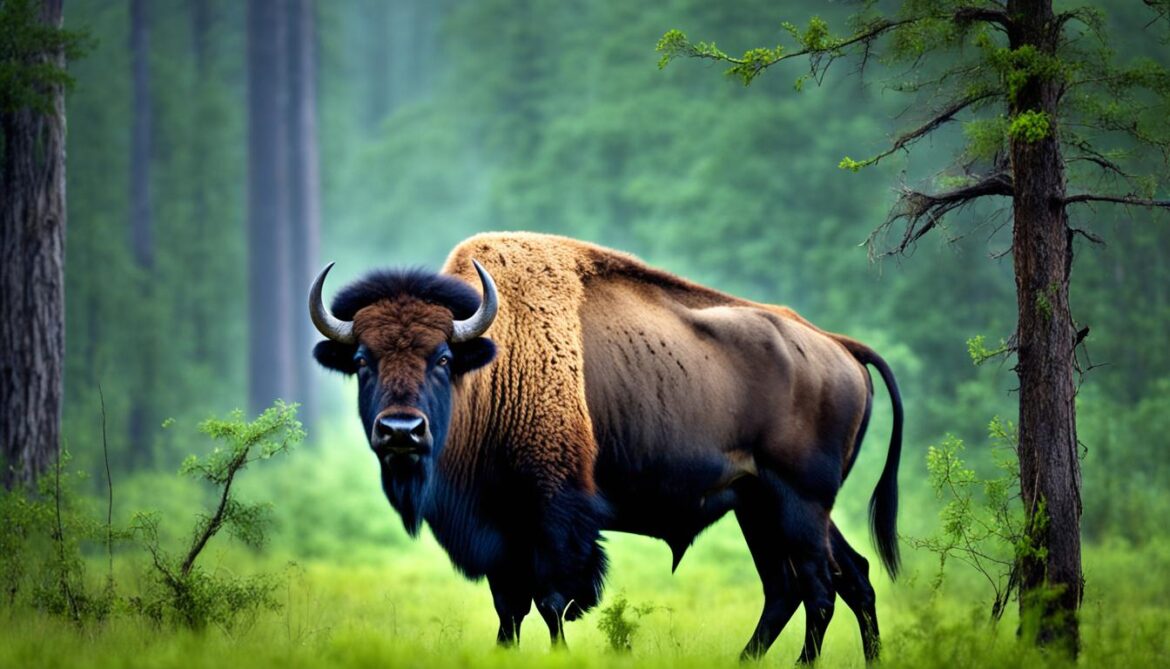
Efforts to protect the Indian bison also involve raising awareness about the importance of conservation and supporting community-led initiatives. By engaging local communities, educating them about the significance of these majestic animals, and involving them in conservation activities, there is a greater chance of long-term success in safeguarding the Indian bison.
“The Indian bison, with its regal presence, holds immense cultural and ecological value. It is our responsibility to protect and preserve this endangered species for future generations.” – Wildlife Conservationist
Conservation Efforts for the Indian Bison
The following table highlights key conservation efforts being undertaken to protect the Indian bison:
Table: Indian Bison Conservation Efforts
| Conservation Efforts | Description |
|————————————————————–|—————————————————————————————————————————————————————————————————————————————–|
| Strict Anti-Poaching Measures | Increased security, patrolling, and surveillance to deter poaching activities and disrupt wildlife trafficking networks. |
| Habitat Restoration | Restoration and protection of grasslands and native vegetation to provide sufficient food sources and create suitable habitats for Indian bison populations. |
| Wildlife Corridor Creation | Creation of corridors connecting fragmented habitats, allowing Indian bison populations to move and interact with each other, ensuring genetic diversity and increasing their chances of long-term survival. |
| Community Engagement and Education | Involving local communities in conservation activities, raising awareness about the Indian bison’s ecological importance, and promoting sustainable practices to reduce human-wildlife conflicts. |
| Collaborative Research and Monitoring | Implementation of scientific research and monitoring programs to study Indian bison populations, their behavior, and the impact of conservation efforts, enabling adaptive management strategies for their protection. |
The efforts mentioned above, along with a collective commitment to conservation, offer hope for the recovery and preservation of the Indian bison. By addressing the root causes of their decline and working towards sustainable solutions, we can ensure a brighter future for this iconic species and the ecosystems it inhabits.
Conclusion
India’s biodiversity is under severe threat from habitat destruction, pollution, climate change, invasive species, and resource overexploitation. These factors not only endanger individual species but also disrupt the delicate balance of ecosystems and the benefits they provide to humans. To counter these threats, it is imperative to prioritize conservation efforts and take immediate action.
Conservation initiatives, including stringent anti-poaching measures and habitat preservation, play a vital role in protecting the unique flora and fauna of India. By protecting and preserving India’s biodiversity, we ensure the sustainability of vital ecological processes, such as pollination, soil fertility, and climate regulation.
Preserving India’s diverse ecosystems and species is not just the responsibility of government agencies or conservation organizations. It is a collective responsibility that requires the active participation of individuals, communities, and businesses. By adopting sustainable practices, supporting conservation efforts, and raising awareness about the importance of biodiversity, we can safeguard the future of India’s natural heritage for generations to come.




